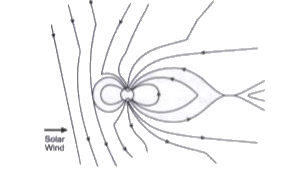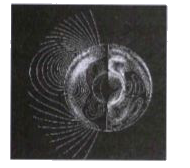The toxicity symptoms of Mn like brown spots surrounded by chlorotic veins is due to -
Deficiency of Mn only
Excess of Fe
Excess of Mg
Combined deficiency symptoms of Fe, Mg and Ca
The correct Answer is:D
Step-by-Step Solution:
1. Understanding Manganese (Mn) Toxicity:
- Manganese is a micronutrient essential for plant growth but can be toxic when present in excessive amounts.
2. Identifying Symptoms of Manganese Toxicity:
- The specific symptom mentioned in the question is the appearance of brown spots surrounded by chlorotic (yellowing) veins on the leaves. This symptom is characteristic of manganese toxicity.
3. Analyzing the Options:
- Option 1: Deficiency of manganese only - This would not cause toxicity symptoms; rather, it would lead to deficiency symptoms.
- Option 2: Excess of iron - While iron is also a micronutrient, its excess does not typically lead to the symptoms described.
- Option 3: Excess of magnesium - Similar to iron, excess magnesium does not cause the specific symptoms of manganese toxicity.
- Option 4: Combined deficiency symptoms of iron, magnesium, and calcium - This option refers to deficiencies, not toxicities.
4. Conclusion:
- The symptoms of brown spots surrounded by chlorotic veins are indicative of manganese toxicity due to the excess of manganese in the plant. Therefore, the correct answer is that these symptoms are due to manganese toxicity.
Final Answer:
The toxicity symptoms of Mn, like brown spots surrounded by chlorotic veins, are due to excess manganese.
---
- Manganese is a micronutrient essential for plant growth but can be toxic when present in excessive amounts.
- The specific symptom mentioned in the question is the appearance of brown spots surrounded by chlorotic (yellowing) veins on the leaves. This symptom is characteristic of manganese toxicity.
- Option 1: Deficiency of manganese only - This would not cause toxicity symptoms; rather, it would lead to deficiency symptoms.
- Option 2: Excess of iron - While iron is also a micronutrient, its excess does not typically lead to the symptoms described.
- Option 3: Excess of magnesium - Similar to iron, excess magnesium does not cause the specific symptoms of manganese toxicity.
- Option 4: Combined deficiency symptoms of iron, magnesium, and calcium - This option refers to deficiencies, not toxicities.
- The symptoms of brown spots surrounded by chlorotic veins are indicative of manganese toxicity due to the excess of manganese in the plant. Therefore, the correct answer is that these symptoms are due to manganese toxicity.
The toxicity symptoms of Mn, like brown spots surrounded by chlorotic veins, are due to excess manganese.
Similar Questions
Toxicicity of manganese in aplant result in a. Brown spot surrounded by chlorotic venis, b. Increases in uptake of Fe, c. Inhabition of Ca translocation in shoot apex
View SolutionA plant exhibits the appearance of brown spots surrounding by chlorotic veins. When inspected in more detail , it is observed that its calcium translocation to the shoot is also disrupted. The plant is showing toxicity of
View Solution
Knowledge Check
- Question 1 - Select One
Assertion: The prominent symptom of manganese toxicity is the appearance of brown spots surrounded by chlorotic veins.
Reason: Excess of maganese may induce deficiencies of iron, magnesium and calcium.AIf both assertio and reason are true and reason is the correct explanation of assertionBif both assertion and reason are true but reason is not the correct explanation of assertionCif assertion is true but reason is falseDif both assertion and reason are false - Question 2 - Select One
Brown leaf spots surrounded by chlorotic veins are charactersied by :
ADeficiency of MnBDeficiency of NaCToxicity of MnDToxicity of Mg - Question 3 - Select One
The appearance of brown spots surrounded by chlorotic veins is the prominent symptom of:-
ACopper deficiencyBMolybdenum deficiencyCMagnesium toxicityDManganese toxicity
A : Maganese toxicity cause brown spots ,chlorotic veins and inhibintion of calcium translocation to shoot apex.
R : Toxic effects may be due to direct excess of micronutrients or its interference in the absorbtion and functioning of other nutrients.View SolutionIn IV th group the ppt of Mn(OH)2 in excess of NaOH , turns brown or blue in air due to the formation of
View SolutionThe transition metals and their compounds have paramagnetic properties. This is due to the reason that ions of transition metals have unpaired electrons in (n-1)d orbitals. As the number of unpaired Sc to Mn, the paramagnetic character increases accodingly. From Mn onwards, this character decreases as electrons get paired up. The paramagnetic behaviour is expressed in terms of magnetic moment which is because of the spin of unpaired electron (n). It is given as Magnetic moment =√n(n+2)B.M
Majority of transition metal compounds are coloured both in solid state as well as in aqueous solution. due to d-d transition in which unpaired electrons from the lower energy d-orbitals are transferred to higher energy d-orbitals. The energy of this transition correspond to the radiation in visibe region. Thus, when white light falls on such a transition metal compound, some light energy corresponding to a particular colour is absorbed and one or more electrons are raised from lower energy set of orbitals to those of higher energy. With the absorption of radiations corresponding to specific colour from the white light, a colour known asd the complementary colour is observed or transmitted.
The compound which have the same magnetic moment like that of FeCl2View SolutionA plant is showing symptoms like chlorosis of younger or older leaves, production of sterile flowers and grey spots. It may be due to the deficiency of
View SolutionRead the following text and answer the following questions on the basis of the same:
If we move into space and study the Earth's invisible magnetic field, it wouldn't really look like a bar magnet at all. Earth's magnetic field gets stretched out into a comet-like shape with a tail of magnetism that stretches millions of miles behind the earth, opposite to the Sun. The Sun has a wind of gas that pushes the earths field from the left to the right in the picture.

The core of the Earth is an electromagnet. Although the crust is solid, the core of the Earth is surrounded by a mixture of molten iron and nickle. The magnetic field of Earth is caused by currents of electricity that flow in the molten core. These currents are hundreds of miles wide and flow at thousands of miles per hour as the Earth rotates. The powerful magnetic field passes out through the core of the Earth, passes through the crust and enters space. This picture shows the solid inner core region (inner circle) surrounded by a molten outer core (the area between the two circles). The currents flow in the outer core, travel outwards through the rest of the earth's interior. If the Earth rotated faster, it would have a stronger magnetic field.

By the time the field has reached the surface of Earth, it has weakened a lot, but it is still strong enough to keep your compass needles pointed towards one of its poles. All magnets have two poles: a North Pole and a South Pole. The magnetic poles of earth are not fixed on the surface, but wander quite a bit. The pole in the Northern Hemisphere seems to be moving northwards in geographic latitude by about 10 kilometres per year by an average.
The Earth's magnetism is due to:View Solution

